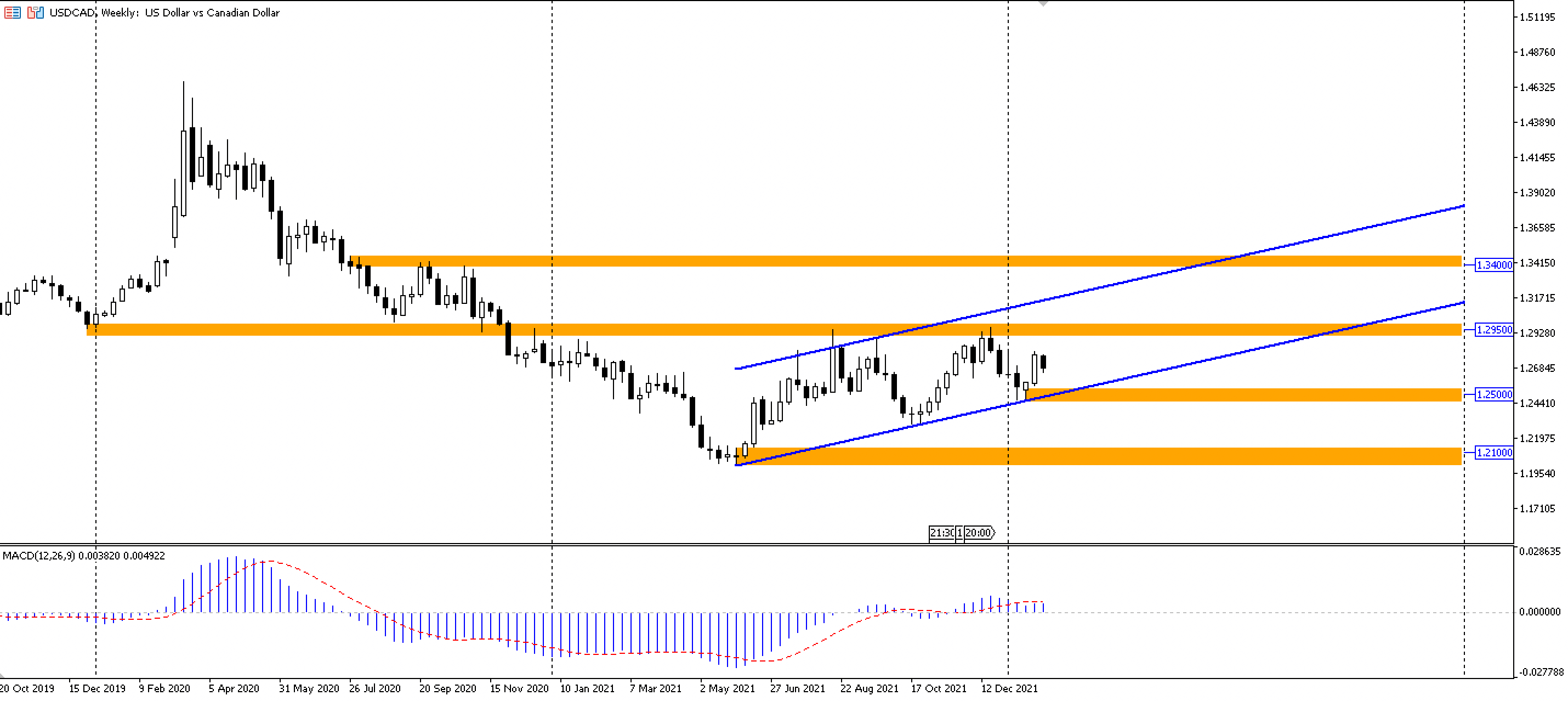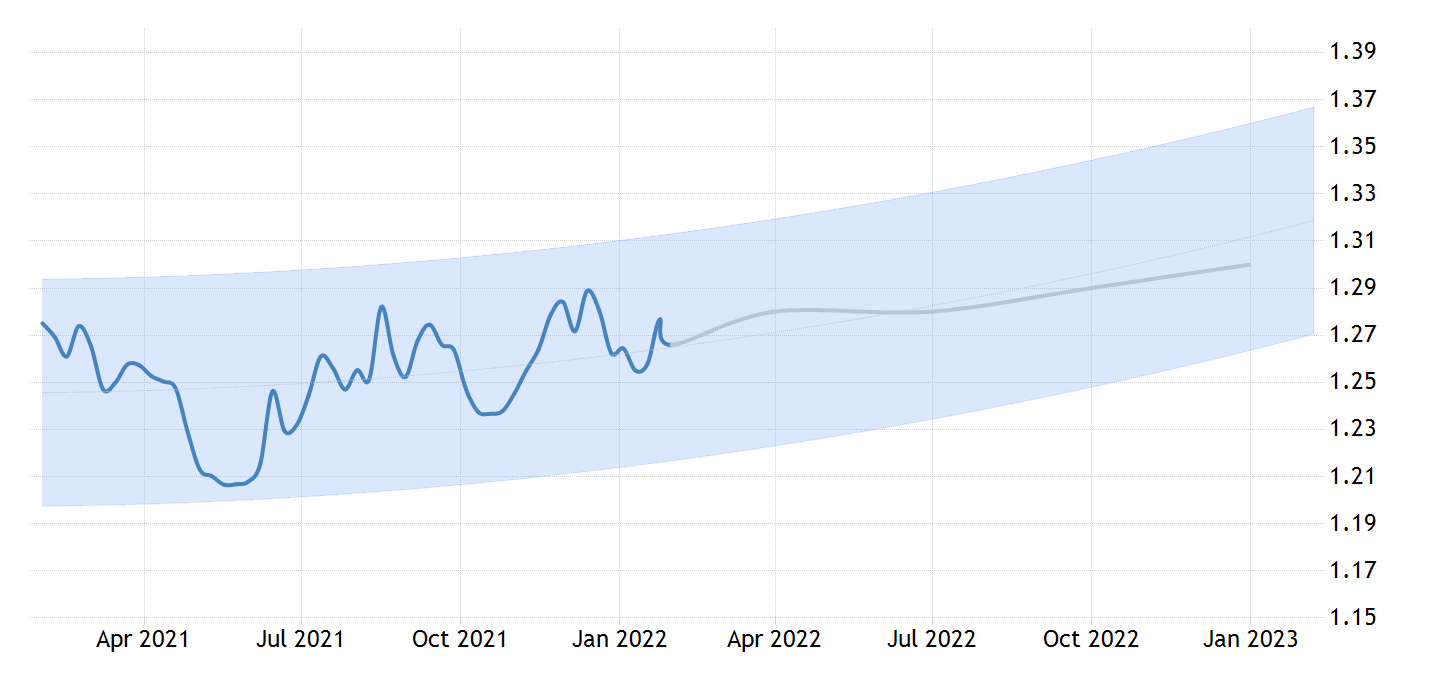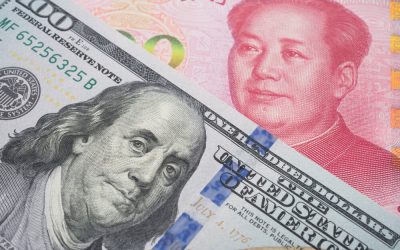
The active recovery of the Canadian economy, rising interest rates in the U.S. or the oil market dynamics – which of these events will have a greater impact on the USD/CAD pair in 2022?
Some experts expect the CAD to weaken significantly, while others expect it to rise. What position should a trader take? This article will shed some light on this subject.
Article content
How to trade the Canadian dollar?
The Canadian dollar (CAD, CA$, C$, Loonie) is the official currency of Canada, one of the top 10 world’s largest economies. The Canadian dollar replaced the Canadian pound, which ceased to exist in 1858.
The Canadian economy is diverse. This means that financial and human resources are equally distributed across various industry sectors. Canada’s leading industries include the real estate and the manufacturing sector. Next in terms of their contribution to the country’s GDP are finance and insurance, construction industry, and mining industry.
Being one of the major oil-producing countries, Canada plays an important role in the international arena. The USD/CAD exchange rate strongly correlates to Brent and WTI oil prices.
Correlation between USD/CAD, Brent, WTI, DXY and NGAS quotes based on 300 H4 candles from 01/31/2022. MetaTrader 4 trading terminal. Date: 01/31/2022.
The chart above shows roughly a 70% negative correlation of oil to the Canadian dollar. It means that when oil goes up, the USD/CAD rate usually goes down and vice versa.
In addition, in 58% of cases, the medium-term dynamic of USD/CAD is explained by the changes in the U.S. dollar index – DXY.
Let’s take a look at the key USD/CAD trends in 2022.
Fundamental analysis: is the Canadian dollar set to strengthen in 2022?
When the Canadian dollar strengthens against the U.S. dollar, the USD/CAD pair declines. This will be made possible if the Canadian economy recovers at a rapid pace with the Bank of Canada starting to implement a “hawkish” policy earlier and on a larger scale than the U.S. regulator.
 2020-2022 Changes in Canada’s unemployment rate. Date: 01/31/2022. Source: mql5.com.
2020-2022 Changes in Canada’s unemployment rate. Date: 01/31/2022. Source: mql5.com.
The unemployment rate, which has been steadily declining over the past year and a half, indicates a recovery in the national labor market, despite a serious economic shock caused by the COVID-19 pandemic in 2020.
At the same time, as we can see in the chart below, Canada’s GDP (QoQ) has been declining throughout the past year and even experienced negative growth in Q3 2021. Growth in Q4 was above zero, but well below forecasts. This indicates the unstable development of the Canadian economy.
 2016-2021 Canada Quarterly GDP. Date: 01/31/2022. Source: mql5.com.
2016-2021 Canada Quarterly GDP. Date: 01/31/2022. Source: mql5.com.
Uncertainty about Canada’s economic outlook is exacerbated by the low values of the Ivey Purchasing Managers Index, which in December 2021 turned out to be below 50, indicating contraction.
Considering the GDP growth dynamics and poor sentiment in the manufacturing sector, we can’t make one hundred percent optimistic projections about Canada’s development in the coming months, despite the growth in employment.
Against this backdrop, the increase in the key interest rate may be postponed to a later date. Moreover, the Bank of Canada’s January monetary policy report indicates that the regulator expects inflation to rise to 5% through the first half of 2022 and then move lower to about 3%.
In other words, the Bank of Canada is unlikely to raise its interest rate unless inflation rises significantly above 5% in the first and second quarters of 2022. Considering this fact, we can expect the weakening of the Canadian dollar (CAD/USD) for the first six months of 2022.
The situation in the financial markets is constantly changing. Don’t miss out on profitable trades! Follow the daily trading ideas on our website and Telegram channel.
USD/CAD exchange rate in 2022: growth only?
Many experts, on the contrary, expect the USD/CAD currency pair to decline over the next year. Read on to find out why in the Expert forecasts section below.
At the same time, the market can provide excellent opportunities for those betting on the CAD decline. Here are the main reasons why you could consider shorting the loonie.
Oil market outlook
The strong correlation between the oil market and the Canadian dollar suggests that the dynamics of oil prices may significantly impact the USD/CAD currency pair in 2022.
According to the IEA forecast, Brent crude oil prices will decline to around $67 per barrel in 2022. The U.S. Energy Information Administration shares a similar view, expecting WTI crude oil to slip to $60 per barrel by the end of 2022.
2020–2022 Canada CPI inflation factors. Left scale: CPI (black line). Right scale: components subject to supply constraints (red), energy (blue), components where demand is rebounding (green), other components (yellow). Date: 02.02.2022. Source: Bank of Canada report.
According to the Bank of Canada report published in January 2022, the share of energy in Canada’s inflation is expected to decline. In other words, the regulator projects a decrease in energy prices starting from February 2022, followed by a decrease in inflation.
If the inflation rate stays below 5%, the Bank of Canada may postpone its interest rate hike to a later date. And this will hardly support the CAD strengthening.
Fed policy and USD strengthening
FOMC participants’ assessments of appropriate monetary policy, 15 December 2021: median expectations (blue dots), appropriate monetary policy stance (red dots). Date: 02.02.2022. Source: FedWatch Tool.
The US Federal Reserve is seriously determined to combat inflation, which reached 7.0% in December 2021, its highest since 1982. The chart above shows the key interest rate hike forecast for the next few years. It was made even before the publication of staggering inflation data. According to the forecast, in 2022 the interest rate will run in the range of 0.75% to 1.25%.
At the same time, as of February 2, 2022, there’s a 60% probability that, following the FOMC meeting on December 14, 2022, the interest rate will rise to a level between 1.25 % and 1.50%.
All in all, the Fed is likely to raise its key rate several times in 2022, which will support the US dollar and may well send the USD/CAD pair to new highs.
Looking for a way to automate your trading? Connect trading robots from AMarkets and let them do the job. You will find the rating of available Expert Advisors and detailed statistics at this link.
Bank of Canada and rising inflation
In the section above, we’ve mentioned that the Bank of Canada expects inflation to rise to no higher than 5% during the first half of 2022. The nature of monetary policy depends on the achievement of this level.
If we assume that the CPI index will exceed 5-6% in the spring, then we can expect some decisive actions from the Canadian regulator aimed at tackling the rising inflation. In particular, the Bank of Canada may start raising the key interest rate earlier than Q3 2022, which will help strengthen the national currency. Other things being equal, it will cause a decline in the USD/CAD pair. On the other hand, if inflation in Canada remains below 5% and the Fed keeps hiking its key interest rate, the US dollar will strengthen against the Canadian dollar.
USD/CAD chart: 2022 technical analysis
USD/CAD dynamics in the period from October 20, 2019 to February 2, 2022, MetaTrader 5, trading terminal, W1 candles. Date: February 2, 2022. Quotes provided by the AMarkets international broker. This information should not be construed as investment advice.
The orange zones in the chart above highlight the support and resistance levels plotted based on historical accumulation areas and price extremes. If the USD/CAD rate drops to 1.210 or 1.250, then you can look for good entry points to open your long positions. If the price reaches the 1.295 and 1.340 levels, a trader may consider short selling.
It’s also worth noting that the 1.310–1.313 range is the medium-term resistance, where the highest exchange volumes were accumulated for the December 2020 contract.
The blue lines illustrate the ascending channel, within which the USD/CAD pair has been moving for the last eight months. If the price touches or approaches the lower border of the channel, it can be considered as a signal to open a BUY trade. And vice versa – if the price touches the upper border – one can consider placing a SELL position.
The MACD oscillator (12; 26; 9) at the bottom of the chart does not give specific signals at the moment, as it fluctuates near the zero mark. It means that the price can start moving strongly in either direction.
Expert forecasts: USD/CAD quotes in 2022
USD/CAD forecast in the period from February 2022 to January 2023. Date: 02.02.2022. Source: tradingeconomics.com.
The chart above shows the USD/CAD pair forecast based on technical indicators and historical dynamics assessment. According to the forecast, the USD/CAD rate will steadily rise throughout 2022. In Q1 and Q2, the price is expected to grow to the 1.28 level, and in Q3 and Q4, it’s likely to climb up to 1.29 and 1.30, respectively.
The Bank of Canada representatives, on the contrary, predict the strengthening of the Canadian dollar against its U.S. counterpart. According to their projections, the average exchange rate in each of the quarters of 2022 will be 1.24, 1.20, 1.22, and 1.23, respectively.
ING analysts support the bearish outlook on the USD/CAD pair, suggesting that in 2022 it will be quoted in the range of 1.21 to 1.23.










